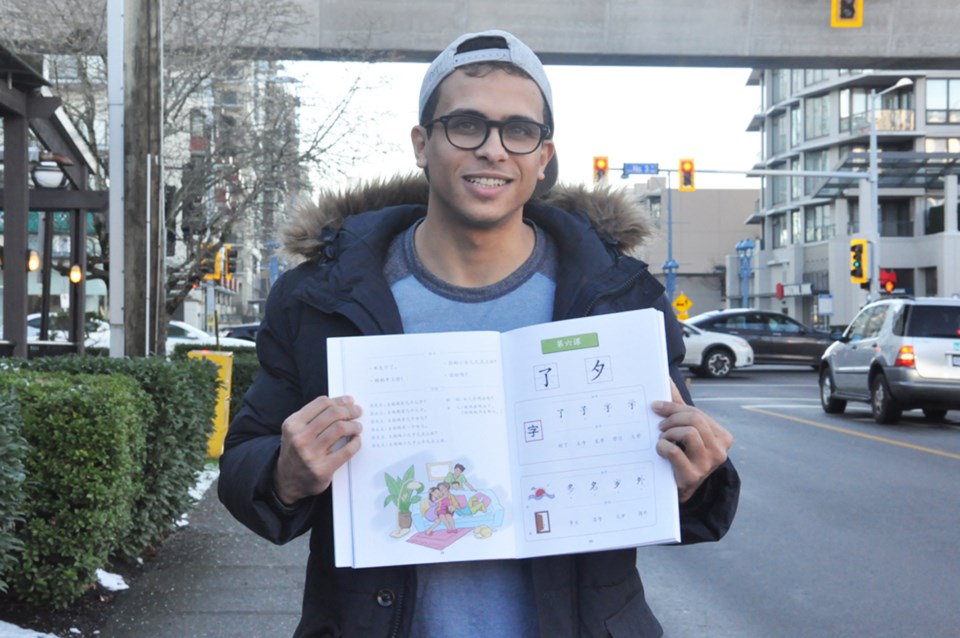Richmond resident Ammar Hussien is committed to learning Chinese. After practising an hour a day for 30 days, he can now carry on a basic conversation in a language that before was completely alien to him.
“I can now recognise some Chinese characters on the street and order a bubble tea in the shop. It feels good. Most importantly, learning Chinese is a fun thing for me to do now,” said Hussien, a science tutor.
He is one of the first students of New Occidental Education & Technology Group (NOET), a speedy Mandarin-learning program introduced from China to Vancouver last month.
It claims to introduce the “fastest” way for Mandarin learners, who have no background in Chinese, to master the language in 200 hours, instead of the regular 2,000 hours needed at school.
“We believe there is a big demand for Mandarin learning in the Vancouver area, especially in cities like Richmond, where Mandarin can be an asset in many professions,” said Patrick Yan, marketing manager of NOET.
“Our program is designed for people or companies who hope to master the language in a very efficient way.”
The program, according to Yan, subverts the traditional ways of teaching Mandarin, in which students first learn through Pinyin (a Romanization system) for months, then spend months learning strokes.
“These things themselves don’t particularly make sense to Chinese second language speakers,” said Yan.
“Chinese is not a phonetic language. The meaning of Chinese is all in the characters, not in the sounds. So learning characters directly will better help learners remember the words.”
The program breaks down each character and comes up with a story for each of them to help students remember their meanings.
“For example, the character for ‘bad’ is made up of the characters ‘sheep’ and ‘work’. We would tell our students, if you ask a sheep to work, the results will be bad. People ask cows to work but no one asks sheep to work,” said Yan.
“The students found it very interesting and learned it very fast.”
Hussien said he really enjoys this method and finds learning Chinese less intimidating.
“For the character for ‘name,’ they split them into two parts, ‘mouth’ and ‘sunset.’ So the story is, after sunset, it’s dark, so we need to call for names using our mouths. That’s how I remember this is called ‘name.’”
After learning the characters, students will then use the characters to help them pronounce, speak, listen and write, according to Yan.
Hussien said he will continue practising Chinese using this method, and hopes this will give him more leverage when applying for jobs as a pharmacist in the future.
“Most of the jobs right now require more than one language, especially in Richmond. Instead of people who only speak one language, I can go to a pharmacy and tell them I speak three languages (including his mother tongue Arabic), and two of them are the most common languages here, that will give me an advantage.”



